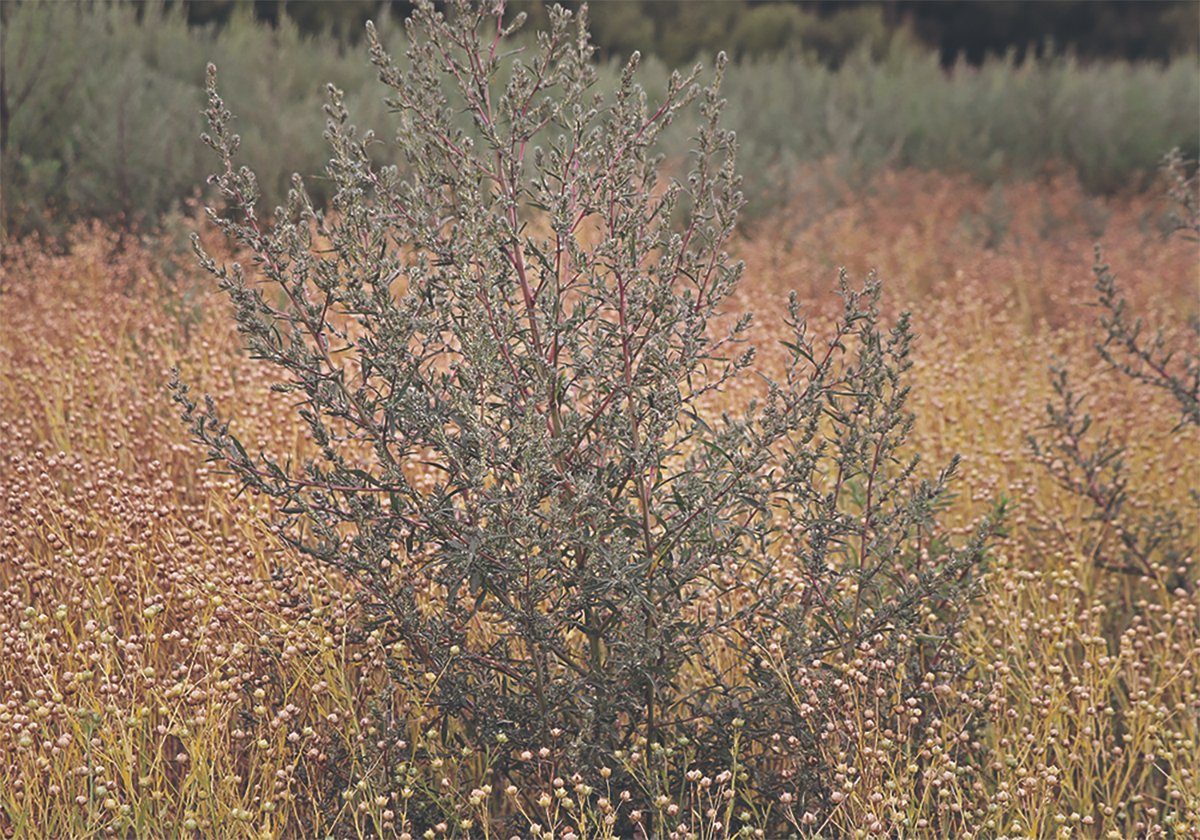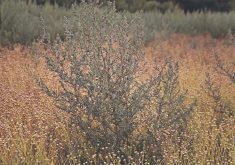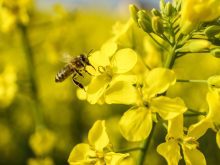Projects can be family time
A few months ago our family bought a “fixer upper” house. Because we do not live on a farm, our children don’t get a lot of exposure to the how to’s of fixing and repairing. My husband, Clint, and I have always enjoyed working on older houses to recycle them back into comfortable homes. We dubbed this house the “Deobald Institution of Higher Learning.”
While working on it, our children have learned planning, building and painting skills that will be useful all their lives. As an added bonus, the project provided many hours for little chats and quality family time.
Read Also

Kochia has become a significant problem for Prairie farmers
As you travel through southern Saskatchewan and Alberta, particularly in areas challenged by dry growing conditions, the magnitude of the kochia problem is easy to see.
This project has also extended to include a third generation. Last week my Dad and step mom, Gilbert and Kay Pearson spent three days working with me on the house. Working on projects together as a family, whether it is repairing a home, harvesting, restoring an old car or making a quilt, provides wonderful opportunities to pass skills, knowledge, wisdom and values to the next generation as well as building friendships.
Dear TEAM: I’m looking for a recipe for rhubarb jelly. Can you help? Also, where can I get Bee Hive wool, for knitting, not raw wool. – M.G., Hudson Bay, Sask.
Dear M.G.: My neighbor Gay Hunt, Rosetown, gave me a rhubarb jelly recipe this past spring. I made it, as well as adapting it to make rhubarb/strawberry jam. I really enjoyed both.
For your wool question, I called two shops in Saskatoon and both of them stock Bee Hive Wool in baby, double knitting and Shetland chunky weights. Shetland chunky is 75 percent acrylic and 25 percent wool. Bee Hive Wool is made by Patons, under the Bee Hive label. These stores do not carry it, but Patons makes a 100 percent wool.
For more information call either the Wool Emporium, 306-374-7848 or the Prairie Lily Knitting and Weaving Shop, 306-665-2771.
Rhubarb jelly
3 1Ú2 cups rhubarb 875 mL
juice
7 cups sugar 1750 mL
2 pouches 2
liquid Certo
Cut up rhubarb and barely cover with water and boil. Strain and squeeze out juice from pulp. Extra juice can be frozen for later use.
Fill boiling water canner with water. Place six clean 250 mL Mason jam jars in canner. Boil 10 minutes to sterilize jars at altitudes up to 300 metres. Boil snap lids five minutes to soften sealing compound.
Measure juice and add sugar. Place in a large saucepan. The pan should be no more than half full to allow mixture to reach a full rolling boil. Mix juice and sugar well, place over high heat and bring to a full boil, stirring constantly. Immediately add Certo. Stir over high heat until mixture comes to a rolling boil. Boil hard for one minute, stirring constantly. Remove from heat and skim if necessary.
Ladle into hot sterilized jars to within 1Ú4 inch of top rim (headspace). Using a rubber spatula, remove air bubbles, readjust headspace to 1Ú4 inch.
Wipe jar rim to remove stickiness. Centre snap lid on jar, apply screw band st until fingertip tight; place jar in canner. Repeat for remaining jars. Cover canner, return water to a boil. Process five minutes at altitudes up to 300 metres. Remove jars. Cool undisturbed for 24 hours. Check seals. Sealed lids curve downward.
Rhubarb/Strawberry jam
13Ú4 cup rhubarb 425 mL
juice
17Ú8 cup whole 450 mL
strawberries
7 cups sugar 1750 mL
1Ú8 cup lemon 25 mL
juice
11Ú2 pouches 11Ú2
liquid Certo
Cut up rhubarb and barely cover with water and boil. Strain and squeeze out juice from pulp.
Fill boiling water canner with water. Place six clean 250 mL Mason jam jars in canner. Boil 10 minutes to sterilize jars at altitudes up to 300 metres. Boil snap lids five minutes to soften sealing compound.
Combine juice and fruit in a large saucepan. Add sugar and mix well. Place over high heat and bring to a full rolling boil, stirring constantly. Boil hard one minute. Remove from heat and immediately stir in liquid Certo. Return to heat and boil hard one minute, stirring constantly.
Remove from heat and stir and skim for five minutes to prevent the fruit from floating.
Ladle into hot, sterilized jars leaving 1Ú4 inch headspace from top rim. Using a rubber spatula, remove air bubbles, readjust headspace to 1Ú4 inch. Wipe jar rim to remove stickiness. Centre snap lid on jar, apply screw band until fingertip tight; place jar in canner.
Repeat for remaining jars. Cover canner; return water to a boil. Process five minutes at altitudes up to 300 metres. Remove jars. Cool undisturbed for 24 hours. Check jar seals.
















